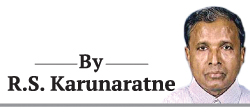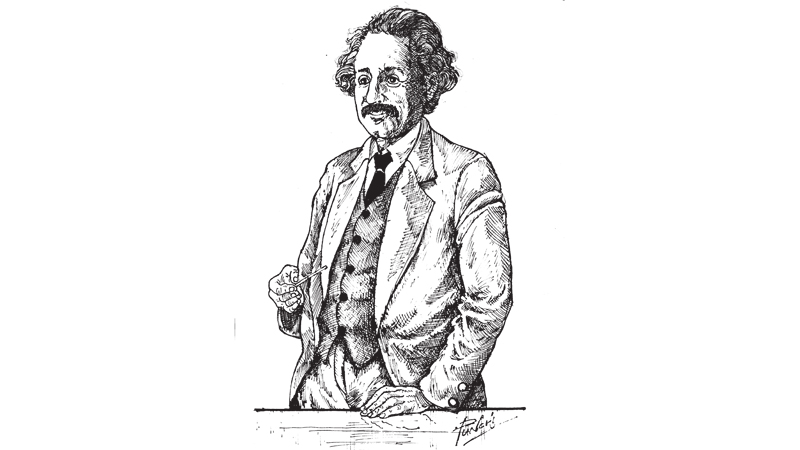 Albert Einstein (1879-1955) needs no introduction for he was the greatest scientist of the 20th century. His superhuman dedication to science is well known and his Theory of Relativity has transformed our conception of the universe.
Albert Einstein (1879-1955) needs no introduction for he was the greatest scientist of the 20th century. His superhuman dedication to science is well known and his Theory of Relativity has transformed our conception of the universe.
In his biography ‘Einstein, the life and times’ Ronald W. Clark says, “Behind the great man, there lurked a perpetual glint in the eye, a fundamental reverence for authority, and an unexpected sense of the ridiculous that could unlatch a deep belly laugh that shook the window.”
Contrary to popular belief, Einstein was no child prodigy. In fact, he took a long time to speak. He was suffering from dyslexia (a difficulty with reading and writing caused by the brain being unable to see the difference between some letter shapes). Apart from that, he was a quiet boy who did not like sports. When soldiers marched through the streets of Munich, children joined the parade and followed them. However, Einstein used to cry when he saw soldiers. He told his mother that he did not want to be a soldier. He saw the parade as a movement of machines.
At the age of five, Einstein fell ill and his father brought him a magnetic compass to play with. The magnetic needle of the compass mocked his picture of an orderly world. Later, he took violin lessons, but he did not like the teacher. When he fell in love with Mozart’s sonatas he thought love is a better teacher than a sense of duty.
Space and time
Sometimes he questioned himself why he developed the Theory of Relativity. One reason was that ordinary people never wanted to think of space and time. In 1916, he went to Holland to meet H.A. Lorentz, a physicist. Lorentz had the habit of offering a cigar to each guest before asking a question. One day, he wrote something on a piece of paper and gave it to Einstein. Suddenly, Einstein was ready with his answer. In a little while both of them were beaming with their eyes skimming over the shining riches of the new theory.
When Einstein got married to his second wife Elisa, she did not understand his scientific work. When he came out of his study, she introduced the people who had come there and the food on his plate. She also told him that she did not know how to explain his new Theory of Relativity. He told her, “If people ask you, you can tell them that you know everything about it, but can’t tell them as it is a great secret!”
One day, Einstein attended a function hosted by the National Academy of Science in Washington to honour some people. All the speakers were droning on and on. Einstein whispered something to a Dutchman who quickly turned away to hide his guffaw. “What did Einstein tell you?” somebody asked the Dutchman. He said, “I have just got a new Theory of Eternity!”
Material things
In 1921, a New York newspaper reporter asked him to explain his Theory of Relativity in a few sentences. Einstein obliged and said, “If you will not take the answer too seriously, and consider it only as a kind of joke, then I can explain it as follows. It was formally believed that if all material things disappeared out of the universe, time and space would be left. According to my Theory of Relativity, however, time and space will disappear together with the things.”
There were many critics who attacked Einstein’s Theory of Relativity. An organisation in Germany claimed that his Theory of Relativity was a Semitic plot to corrupt the world. When they held a demonstration against him, Einstein sat there enjoying every moment. When they made absurd statements he burst into loud laughter.
Similarly, an American announced that he would pay $5,000 to anyone who gave the best exposition of the Theory of Relativity in 3,000 words. Einstein sent him a letter stating that he was not entering the competition because he did not believe that anybody could do it.
Einstein and the Belgium royal family had a common taste for music and poetry. One day, he was emptying his pocket searching for a piece of paper. The contents of the pocket were a penknife, pieces of string and bits of biscuits. Then a crumpled sheet of paper fell out from the pocket. It was a poem the Queen of Belgium had dedicated to him. At the bottom of the paper, Einstein had scrawled. “Autobus 50 pfennigs, newspaper, stationery. duly expenses, noted with care, entangled with the loop of the regal ‘E’!”
When Einstein came to know that someone was trying to assassinate him, he fled to England and spent a week in a refugee camp. He was dressed in a pullover with his wild hair floating in the wind. When he heard that the Nazi professors had condemned his theory, he said, “Were I wrong, one professor would have been quite enough.”
When Einstein had moved to the Institute for Advanced Study in Princeton, someone rang the office. The caller asked where Einstein lived. The secretary replied that she could not give such details. Then the caller whispered: “Please do not tell anyone, but I am Einstein. I am on my way home, but I have forgotten where my house is.”
The mother of a ten-year-old girl came to know that she was regularly visiting Einstein’s house. When questioned, the girl said she had trouble with her homework in arithmetic. So, she sought help from a mathematician who was living there. Mother, alarmed at the child’s boldness, met Einstein and apologised for her daughter’s visits. However, Einstein said he learned more from conversation with the child than she had from him.”
Mortality
Einstein redefined time, but he realised that even he could not reverse its passage. Like many of us, he too felt the process of ageing painful. However, he emerged from ‘young gun’ to ‘elder statesman’ with considerable panache. As he faced the prospect of his own mortality, Einstein displayed remarkable calmness and fortitude.
He did not lean on the traditional religious concept of an afterlife. In a letter to the widow of Heike Kamerlingh Onnes, a Dutch physicist who had won the Nobel Prize in 1913, Einstein wrote, “Our death is not an end if we can live on in our children and the younger generation. For they are us; our bodies are only wilted leaves on the tree of life.”
Einstein was a unique man who for the large part of his life, worked alone. His greatest discoveries were mostly solitary achievements. However, he never lost sight of the dangers of working in a vacuum. Most of us remember Einstein because of his ‘Mad Professor’ look. His shock of hair, the bushy moustache and the hangdog eyes made him identifiable around the globe. In his youth, however, he was quite a head-turner who attracted many girls with his looks.
Although he was a soft-spoken man, he would unleash a booming laugh when something amused him. He was also a man with a sharp sense of humour. Among his peculiarities was a refusal to wear socks.
Einstein died on April 18, 1955 at the age of 76. To the end of his life, he was adamantly against public display, asking that he be cremated without ceremony. After the cremation, his ashes were scattered at an undisclosed place.






